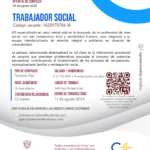Moving from LATAM to the United States for work can be a transformative experience. Crafting a resume that opens doors is pivotal in this journey. A well-prepared resume is your passport to the vast array of remote opportunities available in the U.S. tech industry.
Understanding the cultural and professional nuances of the U.S. job market is key. Your resume must not only showcase your skills and experience but also align with the expectations of U.S. employers. Let’s explore how you can optimize your resume and online presence for a successful career transition from LATAM to a remote job in the USA.
Effective resume strategies for Latin American remote jobs
For LATAM professionals eyeing the U.S. remote job market, it’s crucial to adapt your resume to meet specific criteria. Here’s how you can achieve that:
- Highlight your language proficiency, emphasizing your bilingual capabilities, which are highly sought-after.
- Customize your resume to align with the job description by using keywords that resonate with the role you’re applying for.
- Showcase your experience in working across time zones and handling remote collaborations effectively.
Remember that U.S. employers value clarity and succinctness. Keep your resume concise and focused on your achievements rather than just listing responsibilities.
It’s also advisable to include any certifications or courses relevant to remote work, which can demonstrate your commitment to staying updated with the latest industry trends and tools.
Finally, ensure your contact information is up-to-date and consider adding links to your professional online profiles, such as LinkedIn, which can provide a more comprehensive view of your professional background.

Essential skills for remote work in Latin America
Remote work demands a specific set of skills that go beyond your technical abilities. As a Latin American professional, you should emphasize:
Self-management and discipline are critical when there’s no physical oversight. Highlight examples where you’ve successfully managed your workload and met deadlines independently.
Effective communication is vital in a remote setting. Showcase instances where you’ve navigated through language barriers or cultural differences to maintain clear communication with international teams.
Technical proficiency is also non-negotiable. Be sure to list the remote work tools you’re proficient with, such as project management software, collaboration platforms, and communication apps.
Moreover, adaptability and problem-solving are essential traits that enable remote workers to handle unexpected challenges without the immediate support of a collocated team.
Crafting a standout CV for U.S. employment
The U.S. job market, especially in the tech sector, values specificity. In crafting a standout CV:

- Begin with a powerful summary that encapsulates your professional identity and value proposition.
- Don’t shy away from quantifying your achievements with data and metrics that evidence your impact.
- Understand the significance of ATS (Applicant Tracking System) compatibility and optimize your resume with relevant keywords.
- Include a ‘Technical Skills’ section where you list your proficiency in programming languages, frameworks, and tools.
Remember to adjust the format of your CV to the American standard, which typically does not include a photo and personal details like age or marital status.
How to tailor your LinkedIn profile for remote opportunities
Your LinkedIn profile serves as an extension of your resume and a vital tool in your job search. To tailor your LinkedIn profile:
Make sure your headline is eye-catching and reflects your career goals. Use it to highlight your interest in remote roles in the U.S. job market.
Customize your profile URL to make it more professional and memorable. This small detail can make a big difference when sharing your profile.
Use the ‘About’ section to tell your professional story, focusing on your experience working remotely and your ability to thrive in such environments.
Keep your experience section updated with clear descriptions of your roles and responsibilities, particularly those that pertain to remote work.

Include recommendations from colleagues or supervisors that can vouch for your suitability for remote roles.
Building a professional network in the remote job market
Fostering a robust professional network can significantly boost your chances of landing a remote job in the U.S. Here’s how you can build one:
Start by engaging with industry leaders on professional platforms such as LinkedIn. Share insightful comments on their posts and join relevant groups.
Attend virtual job fairs and webinars to make connections and learn about new opportunities. Don’t hesitate to introduce yourself and ask questions.
Seek out mentorship or guidance from those who have successfully made the transition from LATAM to remote roles in the U.S.
Consider collaborating on projects or contributing to open-source initiatives to increase your visibility and demonstrate your expertise.

Before we delve further into how you can secure a remote job in the U.S., let’s take a moment to watch a video that provides valuable insights into creating a resume for remote opportunities:
Related Questions
How much do remote people make in Latam?
The salary of remote workers in LATAM varies widely depending on the industry, the worker’s experience level, and the U.S. company they work for. Typically, remote roles offer competitive salaries when compared to local standards.
It’s important to research industry benchmarks for the specific role you’re interested in to ensure that you have realistic salary expectations.
How to make your resume stand out for remote jobs?
To make your resume stand out for remote jobs, highlight your remote work experiences and the skills that enable you to excel in such settings. Emphasize traits like self-motivation, time management, and digital fluency.
Also, tailor your resume for each job application, aligning your qualifications with the requirements of the role to showcase your suitability.
How to create an international resume?
Creating an international resume requires understanding the norms and expectations of the global job market. Use a clear and concise format, focus on universal skills, and avoid local jargon that may not be understood internationally.

Furthermore, include any international experience you have, whether it’s education, work, or volunteer activities, as this demonstrates your ability to adapt to diverse environments.
How to make an USA resume?
To craft a resume suitable for the U.S. market, start by adopting a reverse-chronological format, listing your most recent experience first. Do not include personal information unrelated to the job, such as marital status or religious affiliation.
Highlight your skills and accomplishments, using action verbs and measurable results to demonstrate your impact in previous roles.
Embarking on the journey from LATAM to remote USA, crafting a resume that opens doors is just the first step. By leveraging these strategies and insights into the U.S. job market, you can enhance your chances of securing the remote role you aspire to. Embrace this opportunity to propel your career forward and join the growing community of Latin American professionals making a global impact.
 92 job openings in Cuenca, Azuay
92 job openings in Cuenca, Azuay










